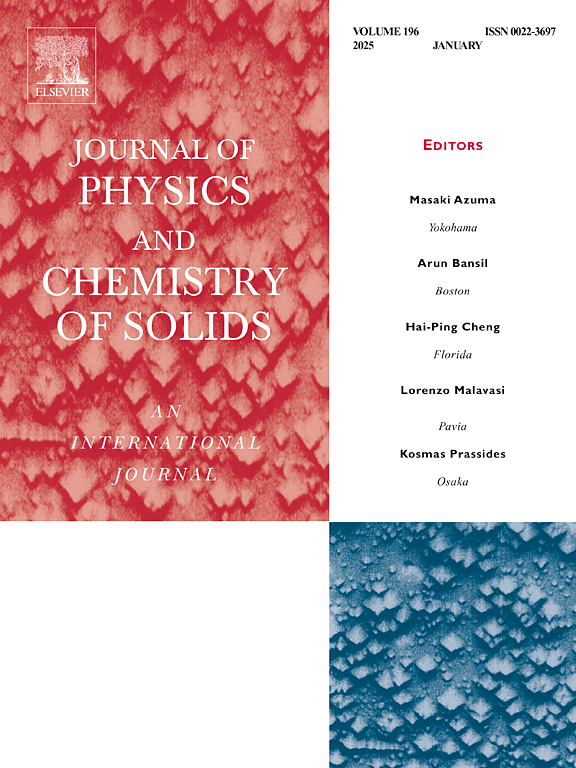Electronic structure modulation and enhanced optical-thermoelectric performance through relativistic band engineering in Eu-doped La2O3 (1.25 %, 2.25 %): Advancing PC-LED technology via GGA+U+SOC analysis
IF 4.3
3区 材料科学
Q2 CHEMISTRY, MULTIDISCIPLINARY
引用次数: 0
Abstract
The study presents a comprehensive computational investigation of europium (Eu)-doped lanthanum oxide (La2O3), focusing on the intricate modifications of electronic, optical, and thermoelectric properties at dopant concentrations of 1.25 % and 2.25 %. Utilizing advanced first-principles calculations through Density Functional Theory (DFT) with generalized gradient approximation, Hubbard-U correction, and spin-orbit coupling (GGA + U + SOC), we systematically explored the quantum mechanical responses and structural transformations induced by precise Eu doping. We discovered that adding europium creates minor change at 1.25 %, however a significant change was observed at 2.25 % doping with respect to optoelectronic and thermoelectric properties. Our measured band gap for pristine La2O3 was 3.743 eV, for Eu–La2O3 was 2.522 eV and for 2Eu–La2O3 was 3.252 eV, where Eu–La2O3 shows one atom of Eu doped in La2O3 and 2Eu shows 02 atoms of Eu doped in La2O3. We also calculated the formation energies which shows that the materials are thermodynamically stable. The results provide critical insights into the fundamental mechanisms of dopant-induced property engineering, offering promising perspectives for advanced phosphor-converted light-emitting diode (PC-LED) technologies and highlighting the intricate relationship between dopant concentration and material performance.
求助全文
约1分钟内获得全文
求助全文
来源期刊
CiteScore
7.80
自引率
2.50%
发文量
605
审稿时长
40 days
期刊介绍:
The Journal of Physics and Chemistry of Solids is a well-established international medium for publication of archival research in condensed matter and materials sciences. Areas of interest broadly include experimental and theoretical research on electronic, magnetic, spectroscopic and structural properties as well as the statistical mechanics and thermodynamics of materials. The focus is on gaining physical and chemical insight into the properties and potential applications of condensed matter systems.
Within the broad scope of the journal, beyond regular contributions, the editors have identified submissions in the following areas of physics and chemistry of solids to be of special current interest to the journal:
Low-dimensional systems
Exotic states of quantum electron matter including topological phases
Energy conversion and storage
Interfaces, nanoparticles and catalysts.

 求助内容:
求助内容: 应助结果提醒方式:
应助结果提醒方式:


